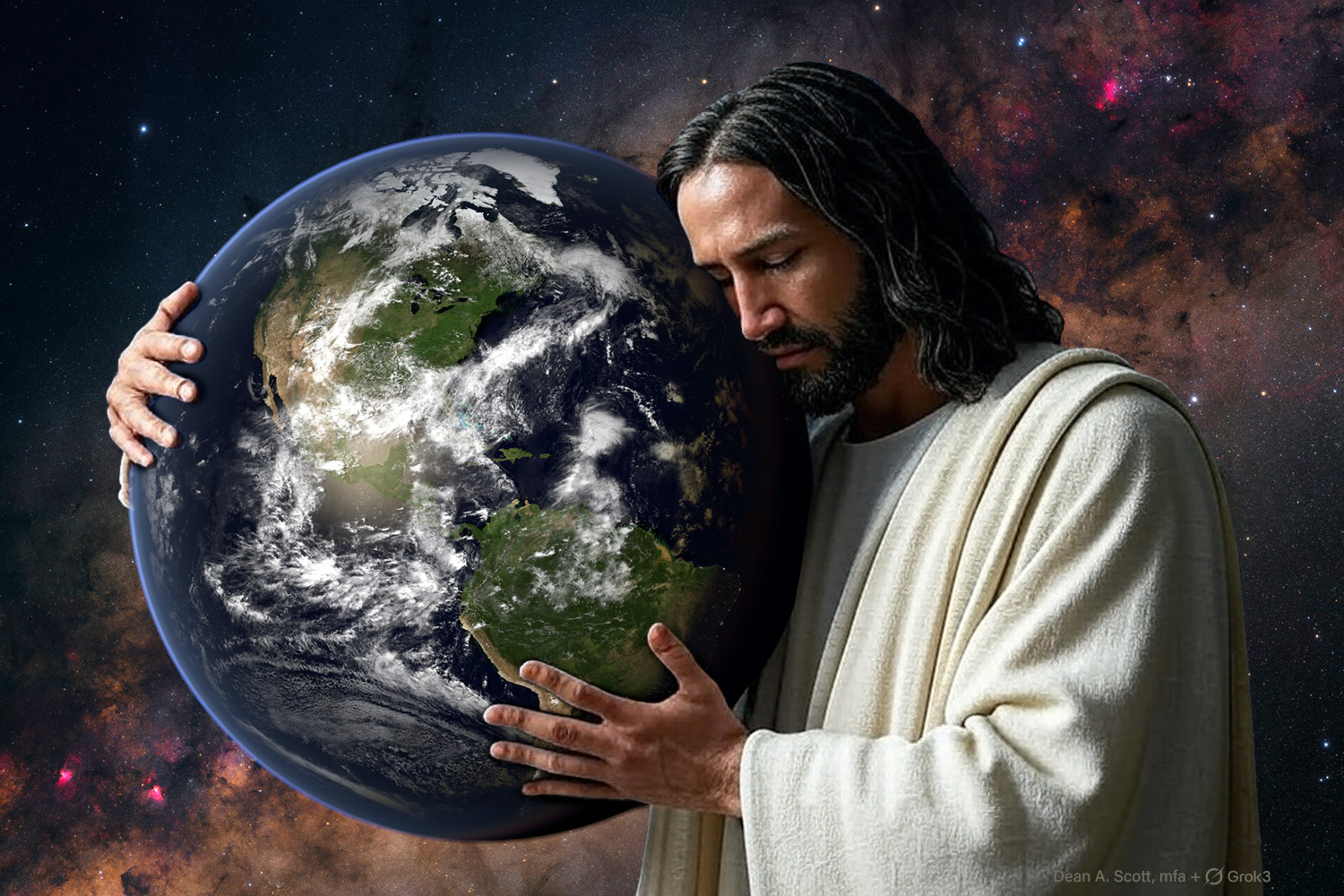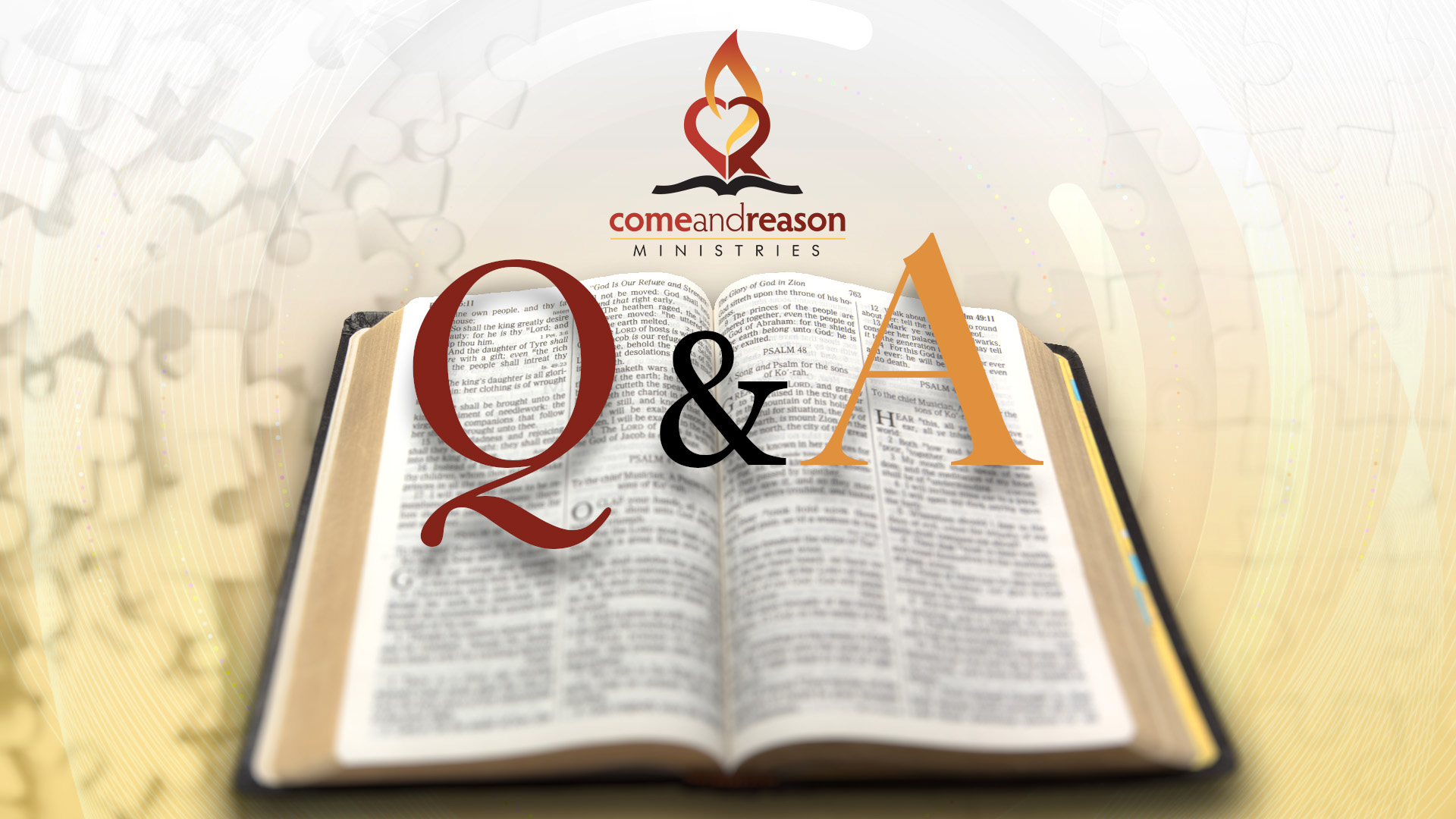I have often heard it said that Christ brought the cure for sin, but no one has ever answered these questions satisfactorily for me. Can you spell out in details for me exactly what the cure for sin is
and how does one apply it to one’s life in order to remove fear and selfishness. How did Christ demonstrate this cure in His life during His stay on earth? Why aren’t we taking this cure so we can be better people? Please address this in one of your blogs.
D
Wow, what great questions, right to the heart of the issue. But before we can understand the “cure,” we must first understand the problem. What is the problem that sin caused that the plan of salvation is designed to fix? How we answer this question colors our interpretation of everything God has done. If we answer, “the problem is God’s law – the law was broken and breaking God’s law offends His holy character and His righteousness requires Him to impose appropriate legal penalties so that justice might be satisfied and forgiveness granted” then we interpret all Christ did in a certain commonly taught model.
But, when Adam sinned, did God get changed in some fashion? Was Christ’s death necessary to somehow fix God, assuage His wrath, appease His anger, pay a legal debt to the law, or to God? Or, when Adam sinned, did Adam actually get changed? Was mankind altered by sin in such a way that our actual condition became terminal unless Christ reversed what sin had done?
The Bible tells us that human beings were created in God’s image, perfect and sinless, but, since the fall, all humans are “born in sin / conceived in iniquity” (Gen 1:26-31, Ps 51:5). Something changed in human kind when Eve believed Satan’s lies. Here is how another Christian author put it (all bold emphasis is supplied by me):
Eve believed the words of Satan, and the belief of that falsehood in regard to God’s character, changed the condition and character of both herself and husband. They were changed from good and obedient children into transgressors, and it was only by repentance toward God and faith in the promised Messiah that they could hope ever to regain the lost image of God. — Review & Herald, January 5, 1886, par. 8
What were Adam and Eve hoping for by repentance and faith in the promised Messiah? That God would forgive? That their penalty would be paid? That God’s anger would be appeased? No, that they would be restored back to God’s original ideal – perfectly restored to His image!
And what does it mean to be in God’s image? “God is love” (1John 4:8). When Adam and Eve sinned they were no longer beings who operated upon the principle of perfect love. Once Adam and Eve sinned, their very natures were changed, psychologically, neurologically, biologically, genetically, such that, without divine intervention, their condition was incompatible with life. In other words, their condition was terminal. (John 5:24, Gal 6:8, James 1:15)
Why?
All life in the universe is created to operate only in harmony with God’s law of love. God’s law of love is the design template for life. The Scripture tells us love is the principle of “giving,” of beneficence, of other-centered selfless regard and this love originates in God (1Cor 13:5, John 15:13, John 3:16, 1John 3:16, 1John 4:8, Romans 1:20). Mankind was created in God’s image to love freely, without selfishness or fear. But lies believed broke the circle of love and trust and resulted in fear and selfishness taking root in the human heart. Fear and selfishness is commonly known as “survival of the fittest.”
The Bible refers to the survival-of-the-fittest instinct as “the law of sin and death” (Romans 8:2). It is Satan’s infection to God’s creation. It is the principle that is the opposite of love and at war with God’s law of love. This concept is stated succinctly below:
All sin is selfishness. Satan’s first sin was a manifestation of selfishness. He sought to grasp power, to exalt self. A species of insanity led him to seek to supersede God. And the temptation that led Adam to sin was Satan’s declaration that it was possible for man to attain to something more than he already enjoyed, possible for him to be as God Himself. The sowing of seeds of selfishness in the human heart was the first result of the entrance of sin into the world. — Workers’ Bulletin, September 9, 1902, par. 3
A metaphor of the law of love is breathing. With every breath we give away CO2 to the plants and the plants give back O2, a perfect circle of free giving which life is designed to operate upon – the law of love in action. If, however, one is “selfish” and hoards his body’s CO2 by putting a plastic bag over his head, the result is death. Selfishness ends life; love is the basis of life.
When Adam and Eve sinned, love, which had been written in their hearts, was replaced with Satan’s law of survival of the fittest. This drive to survive is so strong that humanity alone cannot overcome it. Only divine power can reverse this situation and restore the law of love into the human being. But this had to be done in a human brain. Christ came to achieve this, to remove Satan’s law and restore God’s law of love in the species human!
Christ, in His human brain, was tempted in every way just as we are yet was without sin (Heb 4:15). In Christ’s human brain He destroyed all Satan had worked to achieve (Heb 2:14, 2Tim 1:10, 1John 3:8). Christ, in His human brain, destroyed the survival-of-the-fittest instinct, perfectly restored the law of love, and thereby cured the human condition. He, therefore, became “the source of salvation for all who obey him” (Heb 5:8). Below are some quotes that describe this beautifully:
The atonement of Christ is not a mere skillful way to have our sins pardoned; it is a divine remedy for the cure of transgression and the restoration of spiritual health. It is the Heaven-ordained means by which the righteousness of Christ may be not only upon us but in our hearts and characters (Letter 406, 1906). — 6 Bible Commentary, 1074.2
In assuming human nature, that he might reach to the very depths of human woe and misery and lift man up, Christ has shown what estimate he places upon the human race. In this work everything was at stake. Satan claimed to be the lawful owner of the fallen race; and with what persistent effort did he seek to overthrow Christ through his subtilty! It was only by the most desperate conflict with the powers of Satan that Christ could accomplish his purpose of restoring the almost obliterated image of God in man, and place his own signature upon his forehead. It was a desperate battle; for Satan had so long worked in league with human intelligencies as to almost completely intercept every ray of light shining from the throne of God upon the human mind. The cross of Calvary alone could destroy the works of the devil. In that wondrous sacrifice all eyes were called to ‘behold the Lamb of God, which taketh away the sin of the world.’ The love of Christ kindles in the heart of all who continue to behold him. — General Conference Daily Bulletin, March 2, 1897, par. 17<
In the beginning, man was created in the likeness of God, not only in character, but in form and feature. Sin defaced and almost obliterated the divine image; but Christ came to restore that which had been lost. — Great Controversy, pg. 645
Weakened through sin, we can not of ourselves keep the law of God. But Christ came to our world to restore the moral image of God in men, and to bring them back from the path of disobedience to a path of obedience. His mission to the world was to reveal the character of God by living the law, which is the foundation of his government; and those who will accept him as their personal Saviour will grow in grace, and in his strength will be enabled to obey the law of God. — Signs of the Times, February 11, 1897, par. 15
In the person of Jesus, selfishness – survival of the fittest – was destroyed and perfect HUMAN character was developed. In Jesus, humanity was restored back to God’s original design. Through His life, Christ developed a perfect human character and, at the cross, He completed His work of perfecting humanity by destroying the infection of selfishness (fallen nature). It is Christ’s perfect character which we receive via the work of the Holy Spirit, which heals and transforms us! We actually become “partakers of the divine nature!” (2Pet 1:4).
But when he, the Spirit of truth, comes, he will guide you into all truth. He will not speak on his own; he will speak only what he hears, and he will tell you what is yet to come. 14 He will bring glory to me by taking from what is mine and making it known to you. 15 All that belongs to the Father is mine. That is why I said the Spirit will take from what is mine and make it known to you. — John 16:13-15
What is it that Christ has that we need? A perfect character in harmony with God’s law of love. He writes His law in our hearts and the law is a transcript of His character:
This is the covenant I will make with the house of Israel after that time, declares the Lord. I will put my laws in their minds and write them on their hearts. I will be their God, and they will be my people. — Heb 8:10
The law requires righteousness,–a righteous life, a perfect character; and this man has not to give. He cannot meet the claims of God’s holy law. But Christ, coming to the earth as man, lived a holy life, and developed a perfect character. These He offers as a free gift to all who will receive them. His life stands for the life of men. Thus they have remission of sins that are past, through the forbearance of God. More than this, Christ imbues men with the attributes of God. He builds up the human character after the similitude of the divine character, a goodly fabric of spiritual strength and beauty. Thus the very righteousness of the law is fulfilled in the believer in Christ. God can “be just, and the justifier of him which believeth in Jesus.” Rom. 3:26. — Desire of Ages, pg. 762.2
The Lord Jesus loves His people, and when they put their trust in Him, depending wholly upon Him, He strengthens them. He will live through them, giving them the inspiration of His sanctifying Spirit, imparting to the soul a vital transfusion of Himself. He acts through their faculties and causes them to choose His will and to act out His character. With the apostle Paul they then may say, “I am crucified with Christ: nevertheless I live; yet not I, but Christ liveth in me: and the life which I now live in the flesh I live by the faith of the Son of God, who loved me, and gave himself for me” (Gal. 2:20). — That I May Know Him, pg. 78.4
How do we experience this remedy?
We must understand enough truth about God, as revealed by Jesus, to genuinely trust Him. When we trust Him and choose Him, we open our hearts and invite Him in and the Holy Spirit dwells again in His Temple (our hearts and minds). The Holy Spirit takes all Christ achieved and actually reproduces it in us. Our thoughts, desires, and motives are brought into harmony with God’s. He is the Vine and we are the branches. Connected to Him, through trust (faith), we are infused with His very life and it is no longer sinful you and me living, but Christ living in us. This is our remedy to sin – a faith based union with Christ in which the Holy Spirit dwells in the heart!









 using your credit or debit card (no PayPal account needed, unless you want to set up a monthly, recurring payment).
using your credit or debit card (no PayPal account needed, unless you want to set up a monthly, recurring payment). instead?
instead?